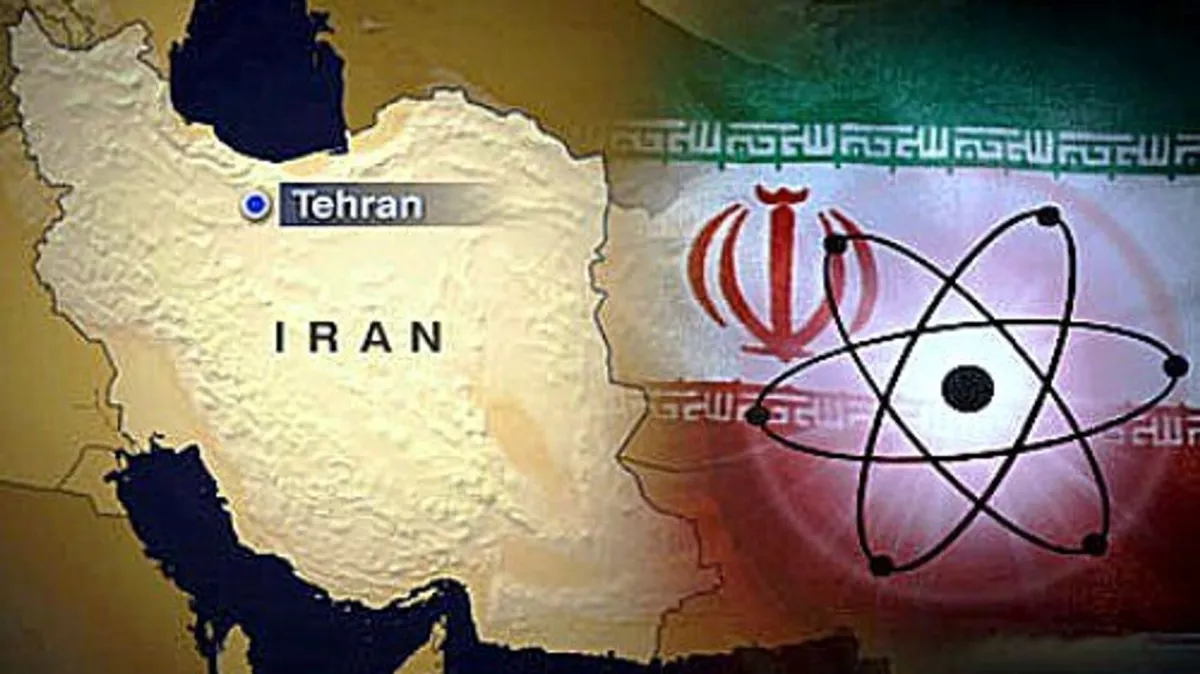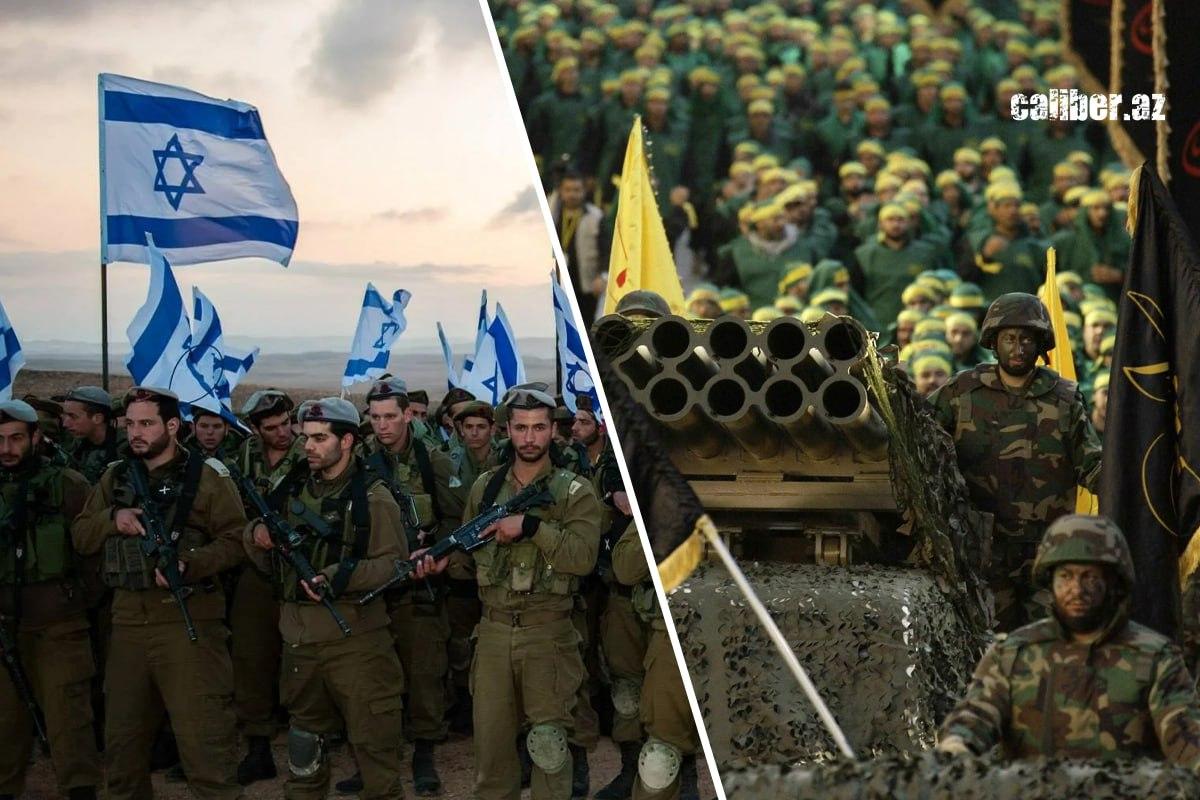Iran vs. Israel: Is war inevitable? Forecasting the endgame
Israeli military officials, in their forecast from March 29, assessed the likelihood of a future war with Iran. They stated that such a war is inevitable.
In March, the United States set impossible conditions for Iran. Donald Trump demanded not only the cessation of Iran's military nuclear program but also a halt to the production of missiles and drones. The third condition was for Iran to stop funding and assisting its proxies (Hezbollah in Lebanon, the Houthis in Yemen, Hashd al-Shaabi in Iraq, and Hamas in Palestine). In exchange for the lifting of economic sanctions, Iran was given two months to meet these demands. Otherwise, it would face a strike. Tehran was given two months to consider this ultimatum.

Iran cannot fulfill these conditions, as doing so would mean dismantling key military-political programs and objectives into which tens of billions of dollars have been invested over the past decades. A halt to missile and drone production would mean the military weakening of Iran, leaving it without advanced weaponry. Similarly, ceasing financial support to various proxy forces would leave Iran without its allies. Moreover, the Iranians see no reason to strike a deal with someone like Trump, who has already destroyed the nuclear deal and generally fails to honour commitments. Furthermore, the U.S. demanded the disbandment of Hashd al-Shaabi. This decision is likely not within Tehran’s options, as the 200,000-strong Shiite Iraqi militia, which primarily controls Iraq, is funded by Iraq’s vast budget and is unlikely to disband voluntarily, even if Iran were to request it.
In Iran's response, voiced by the country's diplomats, it was stated that Iran is ready to discuss the nuclear deal (the lifting of sanctions in exchange for abandoning its nuclear weapons program), but everything else is not subject to discussion.
Theoretically, Iran had the opportunity to engage in and prolong negotiations with the U.S. indefinitely during the Biden administration. However, Trump set strict deadlines—two months—which rendered such tactics meaningless. Additionally, Washington has intensified sanctions against Tehran.
It is possible that the U.S. adopted a tough stance due to Israel, which sees Iran as its main adversary and dreams of Washington striking against it. The influence of Prime Minister Benjamin Netanyahu on Trump today is assessed as very strong. Furthermore, close to the U.S. president is Miriam Adelson, the owner of the sixth-largest fortune in the world and one of the main sponsors of Trump's election campaign, alongside Elon Musk. She is a supporter of the state of Israel and the most hardline and radical forces of religious Zionists, who view Israel as a divine messianic project.

Thus, war is approaching. The U.S. has deployed two carrier strike groups (CSGs) to the region, which are essential for carrying out strikes. Each group consists of approximately 100 combat aircraft and helicopters. Additionally, the U.S. has redeployed extra heavy bombers to a base in the Indian Ocean (Diego Garcia). This is an important signal. Only these combat aircraft are capable of carrying 13.5-ton guided munitions (GBU-57) designed to penetrate deeply buried bunkers.
Iran's nuclear program is vast and dispersed across the country. The main facility, a uranium enrichment plant, is located in the Fordow mountain at a depth of 60-100 meters, and to destroy it, the U.S.-Israel coalition will require American forces, as Israel lacks strategic bombers.
At the same time, Israel possesses the most powerful air force in the region (around 300 combat aircraft, including F-16, F-15, and F-35), capable of operating as a unified force to carry out high-complexity operations. These forces may, and most likely will, be used against Iran. Some experts believe that the U.S. has enough forces (plus existing air bases in the region) for a war with Iran. Others point out the need to concentrate three carrier strike groups in the region for a full-scale air war.
Targets of strikes
To destroy Iran’s nuclear program, several waves of strikes will be necessary. Initially, the attackers will eliminate the remnants of Iran’s air defense systems. During a previous phase of the war last year, 150 Israeli aircraft carried out a strike that destroyed the air defense systems around Tehran and Isfahan. Now, to carry out their plans, Israel and the U.S. will need to continue this work and bring it to completion. Afterward, they will begin to destroy Iran's nuclear facilities. It is likely that they will also target missile factories, drone production plants, and decision-making centers, that is, the bunkers where Iranian leaders are hiding.
There is a high probability that the U.S. and Israel will attempt to kill Iran’s leaders. Previous Israeli attacks, including the assassination of Hamas leader Ismail Haniyeh in Tehran and the killing of Hezbollah leader Hassan Nasrallah in Beirut, have shown that Israel and the U.S. possess vast amounts of intelligence about the Iranian authorities and have deeply penetrated Iran's security systems.
It is possible that the tactic of eliminating the leadership of the enemy, which Israel relied on during its conflict with Iranian proxies Hamas and Hezbollah, will be used again, this time against Tehran itself. In Israel, there is much discussion today about the goal of future attacks being the destruction of Iran’s military and political leadership, with regime change as the objective. However, achieving this is unlikely to be easy.

These operations will likely last several days, or possibly weeks, due to their high complexity. This raises the question of how Iran will respond. Iran has no land border with Israel and cannot fight it on land. The Iranians could launch missile and drone strikes against Israel and U.S. military bases in the region. They may also begin targeting oil transport in the Persian Gulf with missiles to paralyze strategic maritime trade. However, this would lead to further strikes by the U.S., which would begin to destroy Iran’s missile systems, as occurred during similar incidents in the late 1980s.
In principle, the Iranians could kill several dozen or several hundred American soldiers, damage several oil tankers, and carry out prolonged missile strikes on Israeli cities. However, in past phases of the war, Israel and the U.S. shot down nearly all Iranian missiles and drones heading toward Israel. Still, by launching 1-2 missiles every few hours around the clock, Iran could attempt to paralyze Israel with constant alarm signals, affecting its economy and society, with millions of people deprived of sleep and peace.
The role of Hezbollah
Previously, Iran’s main tool in deterring Israel was Hezbollah. It could keep Israel under missile fire for months, crippling its economy, with around 150,000 rockets, including precision-guided ones, and thousands of drones.
In the event of Israeli ground forces penetrating into Lebanon, they were supposed to be met by Hezbollah’s guerrilla forces, positioned in ideal partisan terrain in southern Lebanon, among low mountains covered with forests. This scenario unfolded in 2024 when the Israel Defense Forces (IDF) launched a ground offensive in Lebanon.
Israeli forces were only able to penetrate a few kilometers into Lebanon at several points and were effectively stopped by Hezbollah’s strikes and ambushes. Israeli cities were under fire.
However, Hezbollah suffered massive losses as a result of several sophisticated attacks. The Israelis managed to cripple thousands of militants using pagers and radios rigged with explosives and destroyed bunkers where the organization’s leadership was located.
Moreover, weakened by its conflict with Israel, Hezbollah was unable to support Bashar al-Assad’s regime in Syria. This regime collapsed on December 8 after a devastating attack by pro-Turkish forces that took control of Damascus.
The new Syrian government consists of enemies of Hezbollah, who are now engaged in an armed confrontation with the Shiite group and periodically engage in combat along the Lebanon-Syria border. Not only has Hezbollah lost its ground logistical corridor connecting it to Iran and Iraq, but it has also become isolated from its allies in Lebanon. It is now under fire from both Israeli bombings, which it is unwilling to retaliate against, and strikes from Syria. Additionally, there are significant forces in Lebanon, represented by the new government and allied militias (the "Lebanese Forces"), who may be interested in the destruction of the weakened Hezbollah.

Can Hezbollah, today weakened by devastating Israeli strikes that have decimated its entire military and political leadership, once again become a trump card for Iran? Theoretically, yes. Hezbollah has retained a large portion of its militants and a significant part of its enormous missile capability aimed at Israel. Its command structures are being rebuilt.
However, the organization does not seem confident in its current position. In addition to all the previously mentioned factors, there is one perhaps even more important. Hezbollah is a vast transnational corporation engaged in various business ventures around the globe. Its leadership is composed not only of fanatics but also of wealthy individuals who want to live and prosper.
Surprises and unexpected developments
Iran may have some surprises in store. However, during the previous phase of the war, it suffered heavy losses. Iranian missile strikes caused little damage to Israel and were repelled by the combined forces of the IDF, U.S. military, and their allies, from the British to the Saudi army. Israel’s retaliatory strikes destroyed the leadership of Hezbollah and Hamas (Iranian proxies), inflicted heavy damage on pro-Iranian forces in Syria, leading to the collapse of the pro-Iranian regime of Bashar al-Assad, and, as already mentioned, destroyed Iran’s air defense systems.
The only success of the Iranian coalition has been the actions of the guerrilla groups (partisan and sabotage units) of Hezbollah, which halted the Israeli army’s advance in Southern Lebanon, and the strikes by another Tehran ally, the Houthis, who paralyzed trade in the Red Sea with missiles and drones. However, aside from these actions, Iran has not demonstrated effectiveness in its military confrontation with Israel. The significant scientific, technological, and qualitative superiority of Israel and the U.S. over Iran is evident.
It is this weakness of Iran, coupled with its attempts to develop nuclear weapons, that is likely to lead to a new war. International politics operates in such a way that the weak are targeted in order to prevent them from becoming strong. But it is impossible to become strong without the development of modern technologies, and in this regard, the Iranian regime lags behind the U.S. and Israel.








